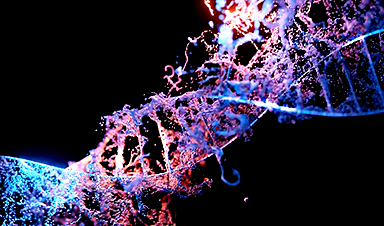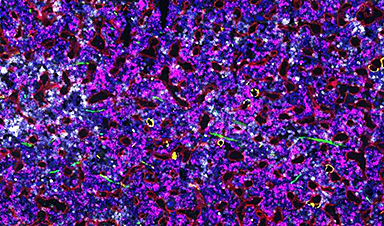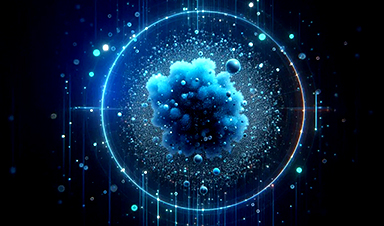Polymers containing quantum dots (QDs) are considered crucial components of next-generation consumer items, but ambiguity remains regarding how these compounds may negatively affect public health and the environment.
A pre-proof paper from the Journal of Hazardous Materials examines how the transport of quantum dots out of polymeric materials and into the environment relates to their surface and size properties.
Polymer Nanocomposites (PNCs): Overview and Significance
Integrating nanostructured additives such as quantum dots into polymers is a method of producing innovative hybrid compounds such as polymer nanocomposites (PNCs) with improved thermal, physical, and optical characteristics.
PNCs have numerous applications in manufacturing essential products within aerospace and automotive materials, fire retardants, energy storage systems, packaged foods, and medical equipment.
Polymer-to-Liquid Transfer of Quantum Dots in PNCs
Sustainable PNC production necessitates assessing if nanoparticles such as quantum dots migrate into the external environment. The transmission of quantum dots into the nearby liquid environment is particularly important for PNCs utilized in medical equipment or food processing applications.
Several investigations on polymer-to-liquid transport phenomena in PNCs have revealed that the nanomaterial mass transmitted from these PNCs into the liquid environment is minimal but variable in volume and shape due to differences in nanofiller characteristics, external environment, polymer type, and testing conditions.
Limitations of Previously Used Quantum Dots Transport Models
Theoretical frameworks can aid in the understanding of how quantum dots move from polymeric materials into the environment. While there are various transport models for small molecules, there are only a few significant models in the literature that are explicitly created for nanoparticle compounds, such as quantum dots.
One of the most pressing issues concerning the risk analysis of nanocomposite materials is the absence of data-supported theoretical frameworks for forecasting the movement of quantum dots from PNCs to the external environment.
More knowledge of nanofiller mass transfer characteristics via theory and experiments can greatly enhance PNC manufacturing and design principles, improving sustainability and lowering the negative effects of next-generation PNCs on the environment.
Highlights of the Current Study
In this study, the researchers created a PNC class utilizing low-density polyethylene (LDPE) as a polymer host and cadmium selenide (CdSe) quantum dots in an assortment of sizes. Because quantum dots are widely available, cover a size range of 1-10 nm, and have minimal size dispersibility, they are suitable models for researching nanoparticle movement from PNCs to the surrounding environment.
The photoluminescence (PL) and composition of the produced PNCs were evaluated to understand how integrating quantum dots in LDPE impacts their interface stoichiometry and surface fault concentration. Various migration studies were carried out to correlate the speed of quantum dot movement with the initial quantum dot diameter and surface reactivity.
This information was then utilized to create a semi-empirical model for predicting the transfer of quantum dots out of polymeric materials and into the surrounding fluid environment.
Important Findings
The researchers observed an inverse relationship between the mass of migratory quantum dots and their original diameter due to smaller particles having a greater specific surface area.
This work also introduced the first theoretical framework capable of modeling the complicated migration process of quantum dots. These models were effectively applied to substrates with a wide variety of starting quantum dots sizes and PNC storage durations. To simulate the movement of quantum dots across polymer and environment interfaces, the framework combines the time-dependent mass expulsion of quantum dots with the diffusion equation under simple boundary conditions.
Based on these findings, it is reasonable to conclude that the theoretical framework developed in this study could be a useful and functional tool for assessing quantum dots migration risks to human health and the environment. This framework can also provide new insights into the physical and chemical processes of the nanomaterials movement phenomena that would be challenging to accomplish using only experimental approaches.
News
How to prevent chronic inflammation from zombie-like cells that accumulate with age
In humans and other multicellular organisms, cells multiply. This defining feature allows embryos to grow into adulthood, and enables the healing of the many bumps, bruises and scrapes along the way. Certain factors can [...]
Breakthrough for long Covid patients who lost sense of smell
A breakthrough nasal surgery has restored the sense of smell for a dozen long Covid patients. Experts at University College London Hospitals NHS Foundation Trust successfully employed a technique typically used for correcting blocked nasal passages, [...]
Scientists Invent Plastic That Can Dissolve In Seawater In Just A Few Hours
Plastic waste and pollution in the sea have been among the most serious environmental problems for decades, causing immense damage to marine life and ecosystems. However, a breakthrough discovery may offer a game-changing solution. [...]
Muscles from the 3D printer
Swiss researchers have developed a method for printing artificial muscles out of silicone. In the future, these could be used on both humans and robots. Swiss researchers have succeeded in printing artificial muscles out [...]
Beneficial genetic changes observed in regular blood donors
Researchers at the Francis Crick Institute have identified genetic changes in blood stem cells from frequent blood donors that support the production of new, non-cancerous cells. Understanding the differences in the mutations that accumulate [...]
Shocking Amounts of Microplastics in the Brain – It Could Be Increasing Our Risk of Dementia
The brain has higher concentrations of plastic particles compared to other organs, with increased levels found in dementia patients. In a comprehensive commentary published in Brain Medicine, researchers highlight alarming new evidence of microplastic accumulation [...]
Baffling Scientists for Centuries: New Study Unravels Mystery of Static Electricity
ISTA physicists demonstrate that contact electrification depends on the contact history of materials. For centuries, static electricity has intrigued and perplexed scientists. Now, researchers from the Waitukaitis group at the Institute of Science and [...]
Tumor “Stickiness” – Scientists Develop Potential New Way To Predict Cancer’s Spread
UC San Diego researchers have developed a device that predicts breast cancer aggressiveness by measuring tumor cell adhesion. Weakly adherent cells indicate a higher risk of metastasis, especially in early-stage DCIS. This innovation could [...]
Scientists Just Watched Atoms Move for the First Time Using AI
Scientists have developed a groundbreaking AI-driven technique that reveals the hidden movements of nanoparticles, essential in materials science, pharmaceuticals, and electronics. By integrating artificial intelligence with electron microscopy, researchers can now visualize atomic-level changes that were [...]
Scientists Sound Alarm: “Safe” Antibiotic Has Led to an Almost Untreatable Superbug
A recent study reveals that an antibiotic used for liver disease patients may increase their risk of contracting a dangerous superbug. An international team of researchers has discovered that rifaximin, a commonly prescribed antibiotic [...]
Scientists Discover Natural Compound That Stops Cancer Progression
A discovery led by OHSU was made possible by years of study conducted by University of Portland undergraduates. Scientists have discovered a natural compound that can halt a key process involved in the progression [...]
Scientists Just Discovered an RNA That Repairs DNA Damage – And It’s a Game-Changer
Our DNA is constantly under threat — from cell division errors to external factors like sunlight and smoking. Fortunately, cells have intricate repair mechanisms to counteract this damage. Scientists have uncovered a surprising role played by [...]
What Scientists Just Discovered About COVID-19’s Hidden Death Toll
COVID-19 didn’t just claim lives directly—it reshaped mortality patterns worldwide. A major international study found that life expectancy plummeted across most of the 24 analyzed countries, with additional deaths from cardiovascular disease, substance abuse, and mental [...]
Self-Propelled Nanoparticles Improve Immunotherapy for Non-Invasive Bladder Cancer
A study led by Pohang University of Science and Technology (POSTECH) and the Institute for Bioengineering of Catalonia (IBEC) in South Korea details the creation of urea-powered nanomotors that enhance immunotherapy for bladder cancer. The nanomotors [...]
Scientists Develop New System That Produces Drinking Water From Thin Air
UT Austin researchers have developed a biodegradable, biomass-based hydrogel that efficiently extracts drinkable water from the air, offering a scalable, sustainable solution for water access in off-grid communities, emergency relief, and agriculture. Discarded food [...]
AI Unveils Hidden Nanoparticles – A Breakthrough in Early Disease Detection
Deep Nanometry (DNM) is an innovative technique combining high-speed optical detection with AI-driven noise reduction, allowing researchers to find rare nanoparticles like extracellular vesicles (EVs). Since EVs play a role in disease detection, DNM [...]






















